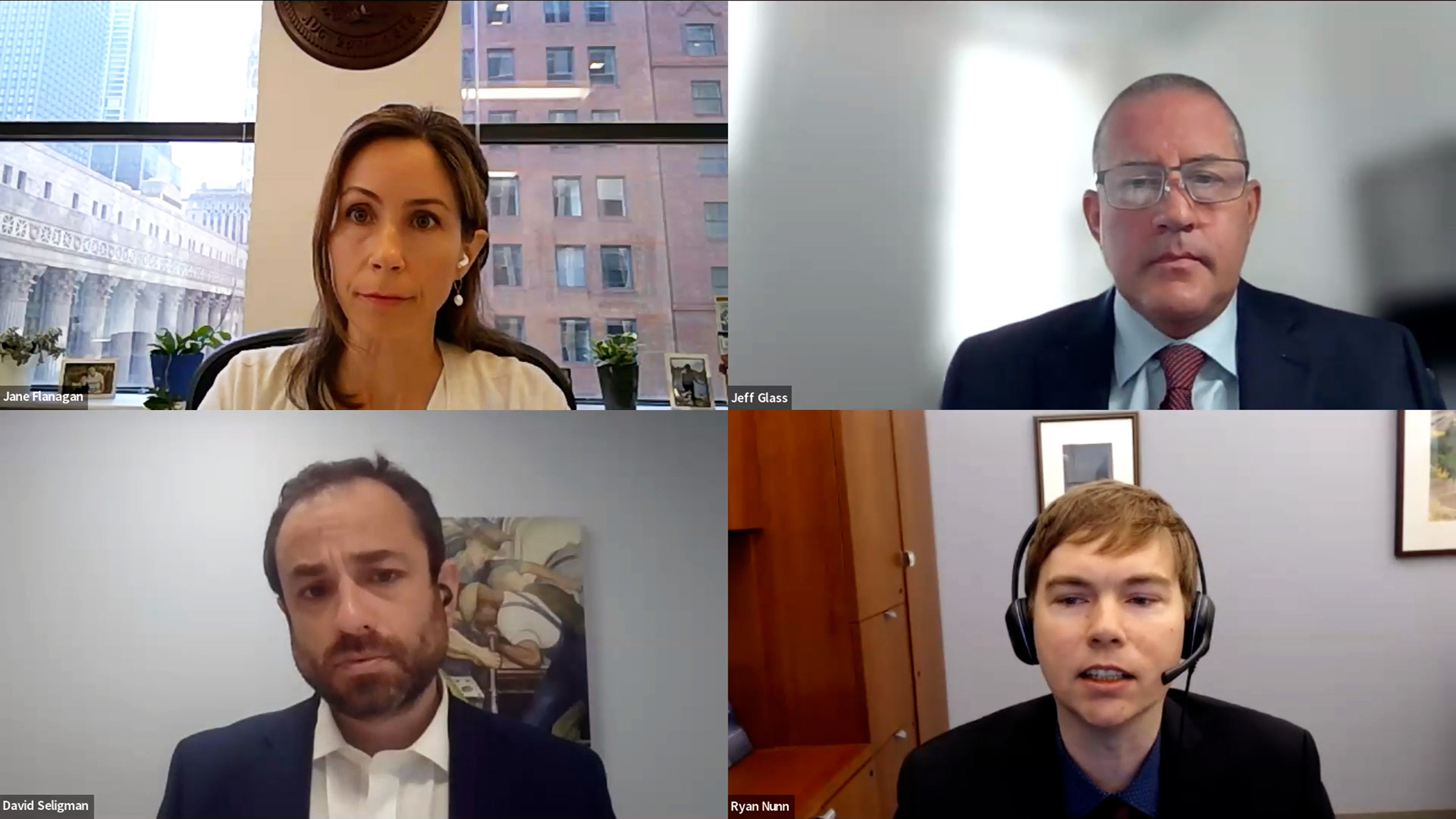Labor markets have features that complicate how workers and employers interact. One such feature is the non-compete, a type of contract that limits an employee’s ability to begin working for a business in the same industry shortly after leaving their job. According to one recent survey, about one in nine adult workers signs a non-compete contract as a condition of employment, including many low- and moderate-income workers.1
In a host of studies over the last 10 years, researchers have illuminated the labor market effects of non-competes, but relatively little analysis or even basic data collection has been done on litigation over these contracts. To help fill the research gap, we collected and analyzed data from recent non-compete litigation in Minnesota. We find that despite the prevalence of non-competes, relatively few non-compete disputes are filed in Minnesota courts. Of those lawsuits, most (but not all) are brought forward by the former employer, against either the worker or the new employer or both. And interestingly, the industry mix of workers with non-competes is not closely related to the industry mix of the lawsuits.
This analysis builds on an existing body of work by Federal Reserve Bank of Minneapolis researchers who seek to understand non-compete contracts, their effects on the dynamics between employers and employees, and in turn their impacts on low- and moderate-income workers. This research can help inform leaders in designing policies that remove barriers and improve outcomes for workers and the overall labor market, and it aligns with the Federal Reserve’s mandate to promote maximum employment.
New developments on non-competes
Before we describe our analysis of non-compete litigation in more detail, consider what researchers have recently learned about the effects of non-competes. For employers that face the loss of their employees, restricting them from taking new employment tends to lower costs, since the employers can avoid productivity losses arising from turnover. On the other hand, workers experience greater costs due to missed job opportunities, and the other employers experience costs in the form of missed hires. Effects on workers are evident even when workers are poorly informed about non-competes and whether they’re enforceable. Research on changes in non-compete enforceability finds that wages and job mobility are lower in jurisdictions where non-competes are enforced more stringently.
Some states have recently moved to scale back the enforceability of non-compete contracts. In July 2023, Minnesota joined California, North Dakota, and Oklahoma in banning the enforcement of non-compete contracts (though in Minnesota’s case, contracts predating the new law remained valid). However, making non-competes unenforceable does not prevent employers from issuing them. Findings from multiple surveys show that non-compete contracts are still prevalent in states where non-compete contracts are not enforced.2 Moreover, it is widely believed (though not widely studied, with the exception of our analysis and a handful of others) that regardless of enforceability, non-compete litigation is rare in comparison to non-compete prevalence.
On its face, this presents a couple of mysteries: Why do employers use non-competes when they are unenforceable? And when they are enforceable, why do non-competes have effects on workers if litigation is uncommon?
One hypothesis is that the impacts of non-competes come not only from their explicit enforceability but also via “chilling effects” on workers who are deterred by the threat of litigation and may in some cases be poorly informed about the legal details. Workers often believe that their non-competes are enforceable even when that is not the case.
To better understand the channels through which non-competes and their enforceability can affect workers, data on non-compete litigation are especially helpful. For example, one analysis of cases from a subset of courts in Washington suggests that litigation may be uncommon because firms can use other alternatives. Other research examines how non-compete and trade secrets litigation responds to changes in laws. More data and analysis on non-compete litigation may allow us to better understand how non-compete contracts impact the labor market.
Non-compete cases are a small fraction of non-compete contracts
For our analysis, we conducted keyword searches of the Westlaw legal database to hand-collect data on non-compete cases in Minnesota from 2018 through 2022. Through this process, we uncovered 69 cases in Minnesota related to non-compete contracts: 35 are state cases and 34 are federal cases. The percent of total Minnesota state cases the Westlaw database contains likely stands in the single digits, but the database contains nearly all federal cases. Thus, non-compete cases filed in state court that appear in the database are likely a small subset of all non-compete cases filed in the state, while non-compete cases filed in federal court that appear in the database are likely a near-universe of all non-compete cases filed in federal court.
It is reasonable to expect that the true number of non-compete cases filed in state court is greater than the 35 cases we uncovered. Assuming the share of state cases contained in the Westlaw database that are non-competes is consistent with the share of all state cases that are non-competes, we can expect the true number of state non-compete cases to be in the low thousands. Still, with roughly 300,000 employees in Minnesota having non-competes—that is, about one in nine of the state’s roughly 2.8 million workers—the share of non-compete contracts over which cases are filed in the state is small even when assuming we observe just a small fraction of them.
Why is the number of federal non-compete cases so much smaller? Cases can be filed in federal court if they meet one of two conditions. First, they could raise claims covered by federal law in addition to the state-level non-compete issues we are interested in. An example includes cases that allege both non-compete law violations and trade secrets violations under the Defend Trade Secrets Act of 2016. Second, cases can be filed in federal court if they have parties that reside in different states and controversy amounts that exceed $75,000. An example would be a large employer headquartered outside of Minnesota suing both a former employee who worked in Minnesota and their new employer in another state for an amount exceeding $75,000. These conditions are stringent ones, not often satisfied by non-compete cases.
The small level of litigation, both in state and federal courts, suggests that legal enforcement is unlikely to be the only channel through which non-compete contracts impact workers.
The former employer usually brings the suit
In our sample, the former employer that drafted the non-compete is typically the plaintiff (i.e., the party bringing the complaint). This is evident in Figure 1, which shows that the former employer is the defendant (i.e., the party against whom an action is brought) in only about one in five cases in our sample. Qualitatively, this finding is consistent with other analysis of non-compete case data. When the former employer is the defendant, individuals or their new or prospective employers are seeking either a judgment invalidating the non-compete or a suit over illegal actions related to the non-compete.
The existence of cases against former employers that drafted non-compete contracts suggests that non-competes can affect employee behavior even when the former employer has not yet taken any formal legal enforcement action. For example, employees may be suing because they believe they cannot get another job without invalidating the contract or because they perceive the employer to be making threats about the non-compete to a prospective employer. In turn, these beliefs may also be affecting employees’ job-search behavior.
When the former employer that drafted the non-compete was the plaintiff, we found that the employer sued both the former employee and new employer in 28 cases. By suing both the former employee and the new employer, the former employer can attempt to hold both parties accountable, either by ending the new employment relationship or collecting damages associated with the violation of the non-compete contract (or both). In another 21 cases, the employer sued only the former employee. In seven cases, the original employer with the non-compete sued only the new employer.
In industries where non-competes are especially common, non-compete cases aren’t always
The prevalence of non-compete agreements varies among industries, and so does the prevalence of non-compete cases. But counterintuitively, some industries where non-compete agreements are common, such as wholesale trade or management, have relatively few non-compete cases, as shown in Figure 2. Meanwhile, some industries where non-compete agreements are rarer, like arts and entertainment or construction, have relatively high rates of litigation. Overall, the industries of non-compete contracts and cases are only moderately correlated.
The modest correlation between the prevalence of non-compete contracts and their litigation (to the extent we can observe it) is another indication that there may be more to non-competes than their legal enforceability. If legal enforcement were the only channel through which non-competes affected labor markets, we would expect cases and contracts to be highly correlated, as the enforceability would be the only reason for an employer to issue a contract.
More to be learned
Using newly collected data on a sample of non-compete litigation in Minnesota, we observe that while relatively few non-compete agreements appear to be litigated, workers sometimes take legal action prior to their former employers doing so. We also find that the industries that see relatively high rates of non-compete litigation often do not line up with the industries of workers who have signed non-compete contracts. On their face, these findings suggest that legal enforcement might not be fully driving the observed impacts of non-compete contracts. In other words, they support the commonly held view that non-competes have effects on worker behavior even when no litigation occurs. The results are in line with the presence of chilling effects, where workers are responding to the existence and potential enforceability of the contracts rather than actual litigation.
More research is needed to understand the channels through which non-competes affect worker outcomes. This will include a better understanding of how and when litigation occurs. As state and federal policymakers grapple with non-competes and the details of their enforcement, data analyses can inform them about how these contracts play out in the labor market.
The authors thank Jacqui Baldwin-LeClair and John Morseau for their insights and Christina Spicher for her research assistance.
Appendix: Collecting data on non-compete litigation
To identify non-compete-related litigation in Minnesota for our analysis, we used the Westlaw legal database to compile cases that had any documents containing a fuzzy match for at least one of the following phrases: “non-compete,” “non-compete agreement,” “non-compete covenant,” “covenant not to compete,” “non-competition agreement,” and “agreement not to compete.” A “fuzzy” match is one that corresponds to the search term with minor exceptions, such as small differences in spelling or punctuation.
We collected the initial complaints or other early documents of each case to understand its content. We manually reviewed each case to identify whether it alleged an employee violated a non-compete agreement or alleged an employer was trying to enforce an unenforceable non-compete. We excluded cases that mentioned our non-compete search phrases but did not make these allegations. Specifically, we excluded cases that mentioned the non-compete phrases in an unrelated way, such as when citing precedent or describing other non-competitive processes such as price fixing. We also excluded cases alleging only violations of non-solicitation agreements or trade secrets laws; cases not related to employment, such as those for business sales, partnerships, or contracting; cases with mentions of employment non-competes if not alleging violation or being used to coerce behavior; and cases alleging violation of non-competes if violated while the employee was currently employed by the employer. We included cases for employees and individual contractors, cases specific to the hiring contract as well as to retirement plans or stock redemption agreements that relate to compensation, and cases referencing “de facto” non-competes.
Endnotes
1 Other surveys tend to yield somewhat higher estimates, including the seminal 2021 work “Noncompete Agreements in the US Labor Force,” a The Journal of Law and Economics article by Evan Starr, J.J. Prescott, and Norman D. Bishara.
2 For example, see the surveys cited in “New data on non-compete contracts and what they mean for workers,” a June 2023 Minneapolis Fed article co-authored by members of our team; and “Understanding Noncompetition Agreements: The 2014 Noncompete Survey Project,” a 2016 Michigan State Law Review article by Prescott, Bishara, and Starr.
More On
Ayushi Narayan conducts research on labor market institutions to help the Community Development and Engagement team understand how employment-related policies and trends affect low- and moderate-income communities. Prior to joining the Bank, her work included roles at the Council of Economic Advisers, Nike, and Amazon.








